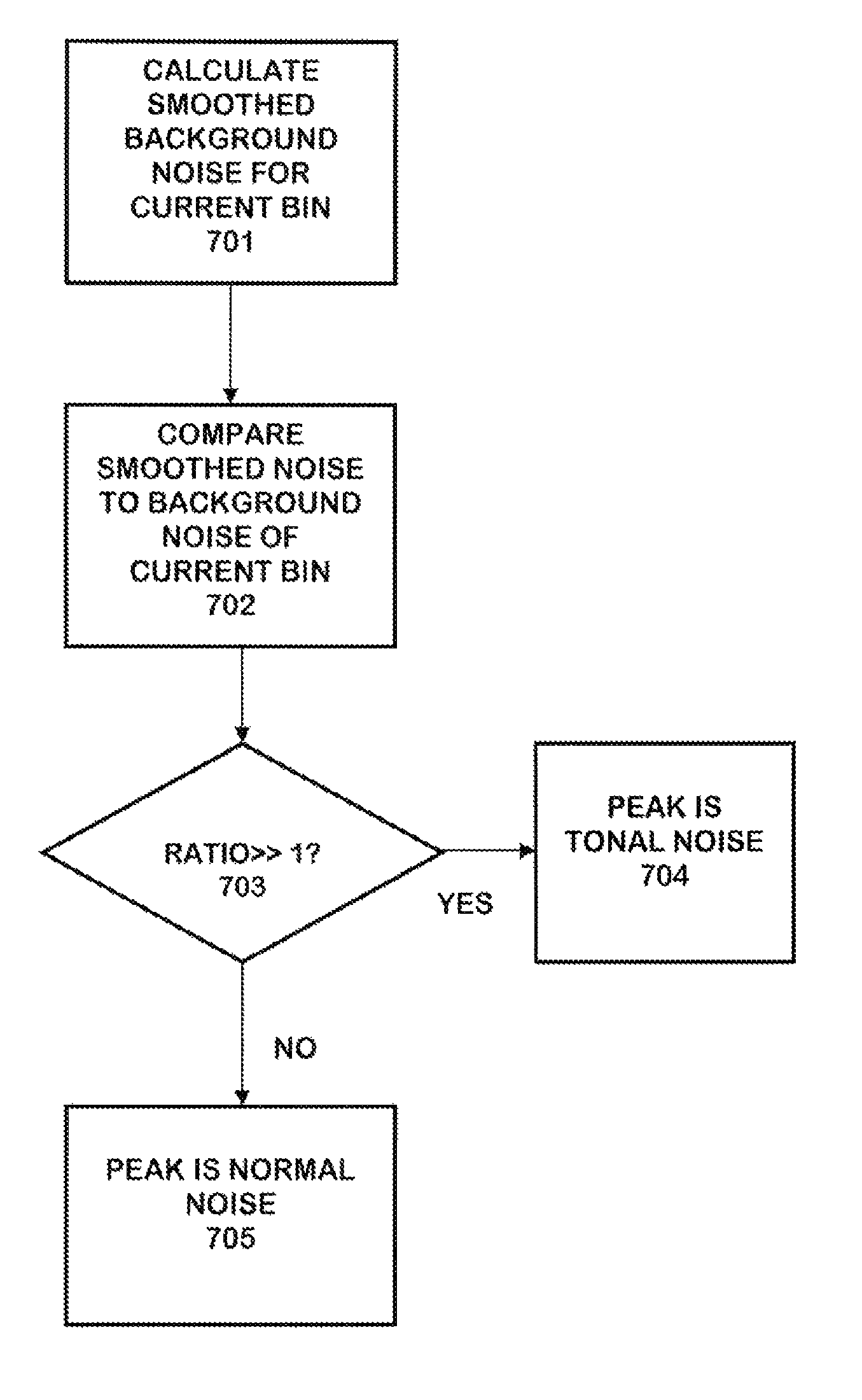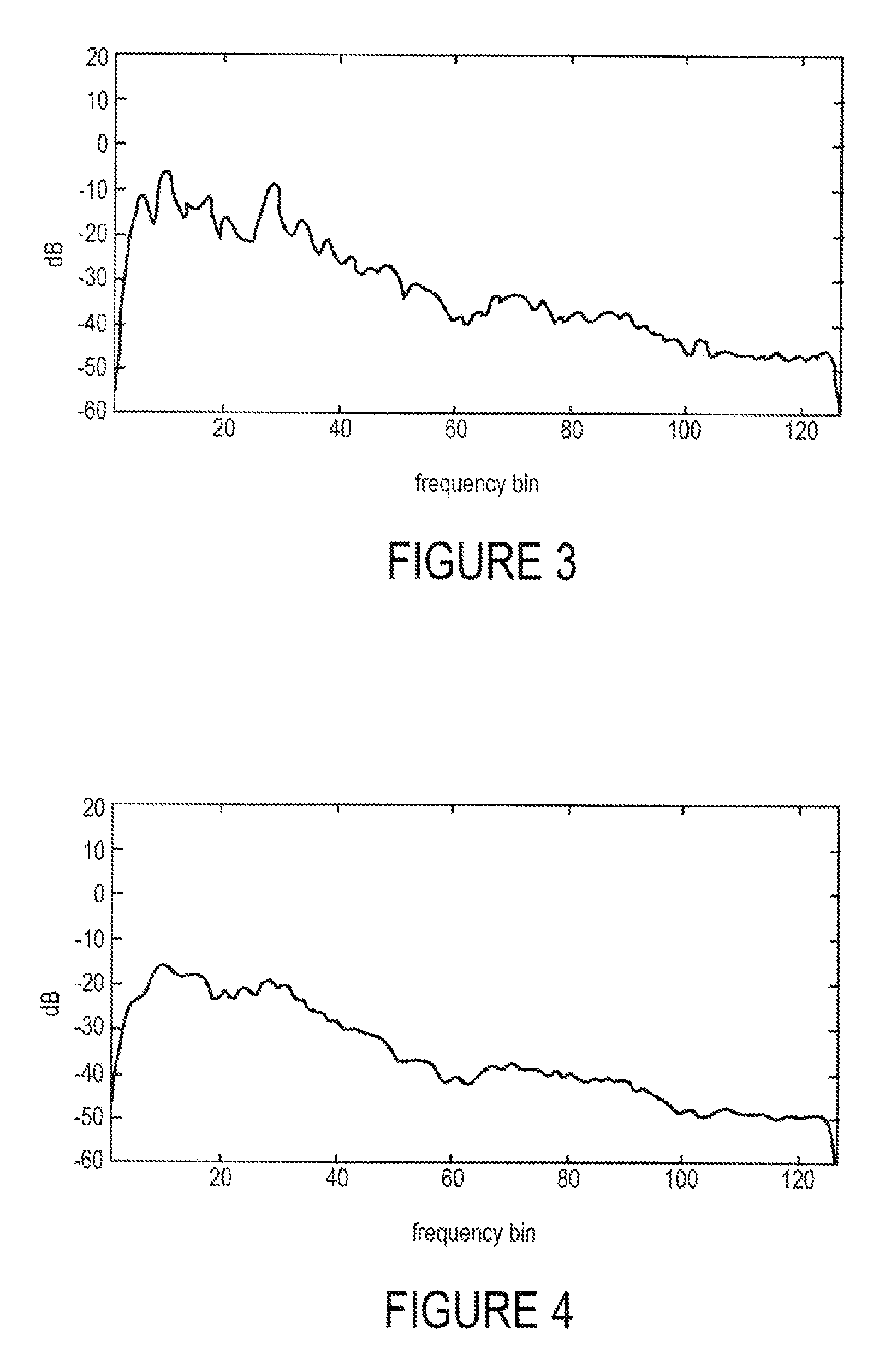Noise reduction with integrated tonal noise reduction
a tonal noise reduction and noise reduction technology, applied in the field of sound processing, can solve the problems of inability to achieve prior art speech enhancement techniques, inability to achieve tonal noise, and inability to effectively eliminate residual tonal sound, so as to achieve greater attenuation and eliminate virtually any residual tonal sound
- Summary
- Abstract
- Description
- Claims
- Application Information
AI Technical Summary
Problems solved by technology
Method used
Image
Examples
Embodiment Construction
[0021]A typical frequency domain speech enhancement system usually consists of a spectral suppression gain calculation method, and a background noise power spectral density (PSD) estimation method. While spectral suppression is well understood, PSD noise estimation historically received less attention. However, it has been-found very important to the quality and intelligibility of the overall-system in recent years. Most spectral suppression methods can achieve good quality when background noise is stationary or semi-stationary over time and also smooth across frequencies. When tonal noise is present in the background a conventional spectral suppression method can suppress it, but cannot eliminate the tonal noise. The residual tonal noises are distinctive and can be annoying to the human ear. This system provides principles and techniques to remove the tonal noise completely without degrading speech quality.
[0022]Tonal noise reduction (TNR) of the system places greater-attenuation a...
PUM
 Login to View More
Login to View More Abstract
Description
Claims
Application Information
 Login to View More
Login to View More - R&D
- Intellectual Property
- Life Sciences
- Materials
- Tech Scout
- Unparalleled Data Quality
- Higher Quality Content
- 60% Fewer Hallucinations
Browse by: Latest US Patents, China's latest patents, Technical Efficacy Thesaurus, Application Domain, Technology Topic, Popular Technical Reports.
© 2025 PatSnap. All rights reserved.Legal|Privacy policy|Modern Slavery Act Transparency Statement|Sitemap|About US| Contact US: help@patsnap.com



